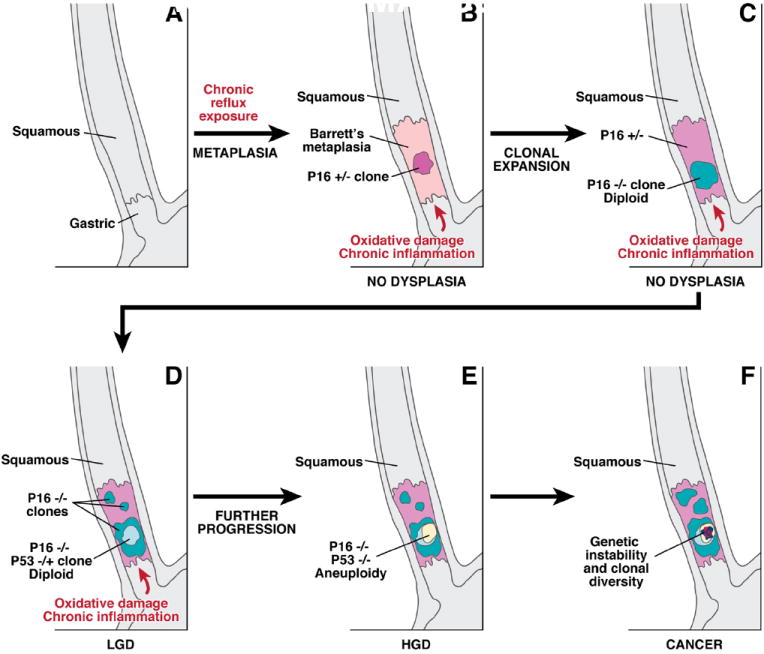Figure 1.

A schematic illustrating the sequential somatic genetic changes in the progression from the squamous esophagus to Barrett’s esophagus to adenocarcinoma. The normal squamous esophagus (A) undergoes a metaplastic transformation with the oxidative damage and chronic inflammation that accompanies chronic gastroesophageal reflux. The initial metaplastic change is followed early on by the loss of one p16 allele (B); this clone may then expand (pink area panel C), followed by loss of the 2nd p16 allele and the formation of some p16 null clones (blue area, C). The subsequent loss of p53 may be associated with morphological changes of low grade dysplasia (LGD), (D). Genetic instability may lead to aneuploidy, which is commonly seen with high grade dysplasia (HGD), (panel E). Numerous clones may develop, and there may be heterogeneity within clones especially as the degree of genetic instability increases and invasive adenocarcinoma develops (F).
